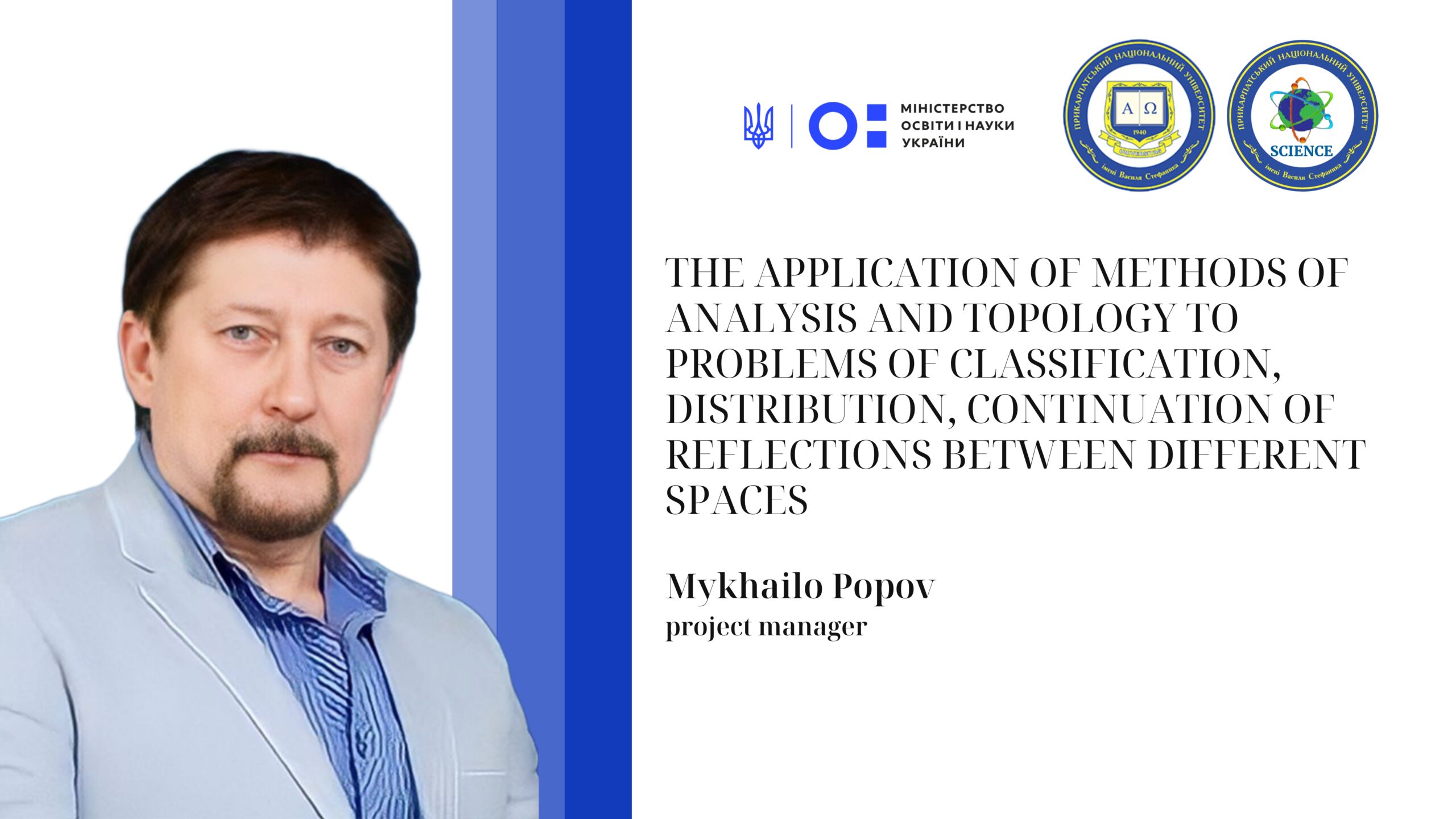
The application of methods of analysis and topology to problems of classification, distribution, continuation of reflections between different spaces
Project duration: from 01.01.2022 to 31.12.2024
Amount of funding: 4500,000 thousand UAH.
Project implementer: “Vasyl Stefanyk Precarpathian National University (Project of the Ministry of Education and Science of Ukraine)
Project objective: The aim of the project is to solve specific problems using existing theoretical methods, as well as new methods created specifically for this particular task. In case of creating a new method, it is planned to provide a complete and reliable justification that allows using this method in further work on other problems.
Project objectives:
- We adhere to the hypothesis that in the theorem of the expansion of a regular operator into the sum of a pseudo-embedding and an ordinally narrow operator, the condition of ordinal continuity of the operator is superfluous. To prove this, we plan to go beyond linear operators and consider this problem for orthogonally additive operators, which have a slightly different ordinal structure that allows the use of other techniques. There is also a special technique that allows some of the results obtained for orthogonally additive operators to be transferred to linear operators, despite the differences in the ordinal structures.
- To apply the technique of studying partially metric spaces, developed in [3] and [42], to establish the conditions of complete regularity, normality and metrizability of partially metric spaces, and to prove various analogues of theorems on the properties of metric spaces.
- To prove that the answer to this problem is positive. Note that a positive answer is equivalent to the conjunction of the following two hypotheses: every complementary subspace of L1 with the Schur property is isomorphic to l1, and every complementary subspace without the Schur property is isomorphic to L1. Each of these hypotheses has been neither confirmed nor refuted to date. The main idea that can lead to the proof of the hypotheses is to use the regularity of every linear continuous operator T: L1 → L1, i.e., the possibility of representing the operator T as the difference of two positive operators. This is an exceptional property of the Banach lattice L1 that has not been used in any work on this problem so far. In particular, the regularity of each projector on L1 significantly narrows the class of complementary subspaces of L1, making those subspaces that were complementary in Lp for p > 1 (for example, the subspace stretched over the Rademacher system or the part of the Gaar system consisting of functions included in all even-numbered bundles) noncomplementary due to irregular projectors. We plan to exploit the regularity of projectors on L1 by using modern advances in vector lattice theory.
Expected results:
- An example of an ordinal basis of a Banach lattice that is not a Schauder basis will be given.
- The Banach lattice L1 has no ordinal basis.
- Every infinite-dimensional complementary subspace of L1 with the Schur property is isomorphic to l1.
- For any p≥1, every infinite-dimensional regularly complementary subspace of Lp is isomorphic to lp or to Lp.
The contact person and project manager at Vasyl Stefanyk Precarpathian National University is Doctor of Physics and Mathematics, Professor Mykhailo Popov,
e-mail: azagorodn@gmail.com
